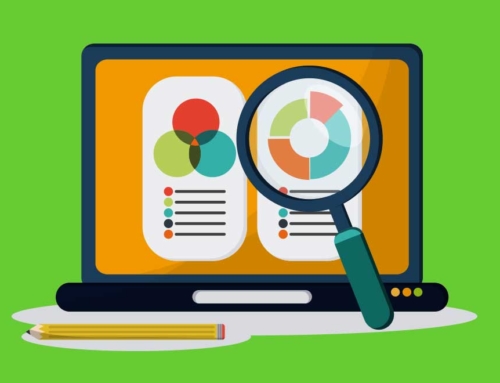
SOCIAL MEDIA! Since the days of Myspace these platforms have been the new way to directly access your audience. The platforms realized this and offered advertising options to help you, the business owner, engage with their members. The current state of digital marketing offers extremely specific demographics at a relatively low cost with solid reporting tools to show you how people are taking to your message. But advertising is not the only, or even the best way to use social media. As we discussed in our last blog “Brand ‘IT’ Factor we talked about what customers are looking for; Value, Culture, and Service. Social media offers a direct way to demonstrate those values without necessarily spending on ad placement and the reporting available is essential to understanding what’s working and what isn’t. Knowing which metrics to pay attention to can be just as important as the content you put out. Not all analytics are equal, so let’s take a look at a couple examples and see what metrics matter.
Numbers don’t lie, but they can be misleading if you read the wrong ones. Things like your number of followers, number of likes, and your reach are well known metrics, but they’re also known as “vanity metrics” and they may not be true indicators that you’re reaching your goals. This is why having a plan before you begin your content marketing strategy is so important (if any of that sounded like a secret code, give us a call we’ll be happy to translate). Knowing what you want your social media messaging to achieve will help you know what metrics in the reporting you want to look at. We have two common examples below: a company selling consumer products and a company trying to raise awareness of their service.
EXAMPLE 1) – The Sales Analytics
Acme Widgets offers the best widgets in the world. These highly desirable widgets are sold in stores, but Acme really wants to build the direct sales side of their business. They’ve set up their sales portal, it’s easily available on their website, and they’re now reaching out to their audience on social media to let them know that they can buy direct from Acme! We’re going to assume that all best practice marketing steps, like calls to action; compelling copy; and specific branding, are being done.
When they release their social media content, things like “likes” and growing follower counts don’t matter as much. Sure it’s nice to have a growing audience, but audience growth is not the objective, sales are. So what metrics should Acme be looking at? The following three are a good place to start:
- Click-thru
- Conversion
- Sales Totals
- Click-thru – Click-thru represents the number of people who see your content and then click on the call to action that they are presented with. Click-thru is important because it shows who is entering your sales funnel. The ones who click-thru are one step closer to spending their money on your product.
- Conversion – Conversion shows how many people who clicked-thru completed the action you wanted them to take. In this example, conversions are the completed sales of widgets! Congratulations! This is a big one to monitor in relation to your click-thru rate because it can show you how people are responding to your offering once they’ve been won over by your message. This metric can help determine if you’re reaching the right audience, if you’re at the correct price point, and if there are any unknown obstacles to purchase.
- Sales Totals – Here’s the big one, the metric that shows how much money you’ve made. Sales totals are more than just gross receipts, though. Seeing how much someone buys during each transaction, if they respond to discounts, and frequency of return buyers is all very valuable information. You can also determine prime sales windows, when transactions are naturally high, and weaker times when a sale or other incentive may be needed to keep sales going.
All of these are far more important than follower counts and can really help you strategize for the future.
EXAMPLE 2) – Awareness Analytics
Acme Widgets is enjoying their direct sales success, but now they’d like to grow their market share. They’ve begun a new awareness campaign to help grow their audience for widgets. We’re purposely talking about awareness plays like this because it uses the analytics that most people focus on:
- Followers
- Reach
- Mentions
That being said, a lot of people read these metrics poorly giving them the wrong weight and that leads to bad decisions. Let’s take a look at how to read these numbers better.
- Followers – In an awareness play followers are great, we want to see those numbers going up. But not all followers are created equal. There are services, mostly scams, that offer to help you grow up to a million followers for a fee. Do not use those. Followers are only good if they:
- Are real people who can eventually become customers.
- Are engaged with your content.
This is why organic growth is the best, and one of the slowest, ways to gain followers. Organic followers are there because they want to be. They are more likely to purchase from you and more likely to tell their friends, which leads to our next metric…
2. Reach – Reach is a measure of how far your message is getting out onto your platform of choice. An example would be posting something on your Facebook business page that has 1000 followers, but due to shares or the magic of the algorithm you may appear on additional feeds beyond those 1000 followers. The reach number indicates how much penetration into the ecosystem of the platform you are making and most platforms offer paid services to help increase that reach.
3. Mentions – For the sake of this example, mentions are direct comments on your post and the times your followers share your content with their followers list. These are key because they can be the most authentic indicator of customer support and satisfaction. Comments allow you to react directly and manage customer service issues. Shares allow you to see what people are telling their circles about you and your products. Paying close attention to mentions will provide a guide to keeping your followers happy with your content and products.
There is so much more that we could cover, but this is a blog not a TED Talk. Hopefully these scenarios will help you figure out if you’re looking at the right analytics for your business.
If you need help, don’t hesitate to reach out. This is what we do.
Next week we will take a closer look at your customer and how you interact with them.






Leave A Comment